Best Practices for Tracking Procurement KPIs


Procurement KPIs are measurable values that help you gauge the success of your procurement procedures and initiatives.
By keeping your eye on them, you can easily identify areas for improvement, boost operational efficiency, and potentially even drive significant cost savings.
But for that, you first need to establish a well-structured KPI tracking process, which can be somewhat tricky if you have no prior experience.
That’s why we dedicated this article to best practices for monitoring your procurement metrics.
In it, we break down the why and the how behind every piece of advice and provide some interesting insights from industry experts.
So get ready to take your KPI tracking to the next level.
Before you even begin monitoring your KPIs, you should first clearly define what exactly you want to measure and track.
This may sound a bit obvious, but starting with only a vague idea of your objectives can result in a completely unfocused and chaotic tracking process, ultimately leading to unreliable, and therefore unusable data.
Say you decide you want to improve your procurement efficiency.
In order to do so, you start tracking all sorts of different metrics, but never really allocate enough time to ensure they are actually relevant to your procurement goals and needs.
What would happen next?
Well, your team would probably become quite overwhelmed by all the information, lose focus, and possibly even give up on the task entirely.
So, to avoid that and set yourself up for success from the get-go, make sure your KPIs adhere to SMART criteria: Specific, Measurable, Achievable, Relevant, and Time-bound.
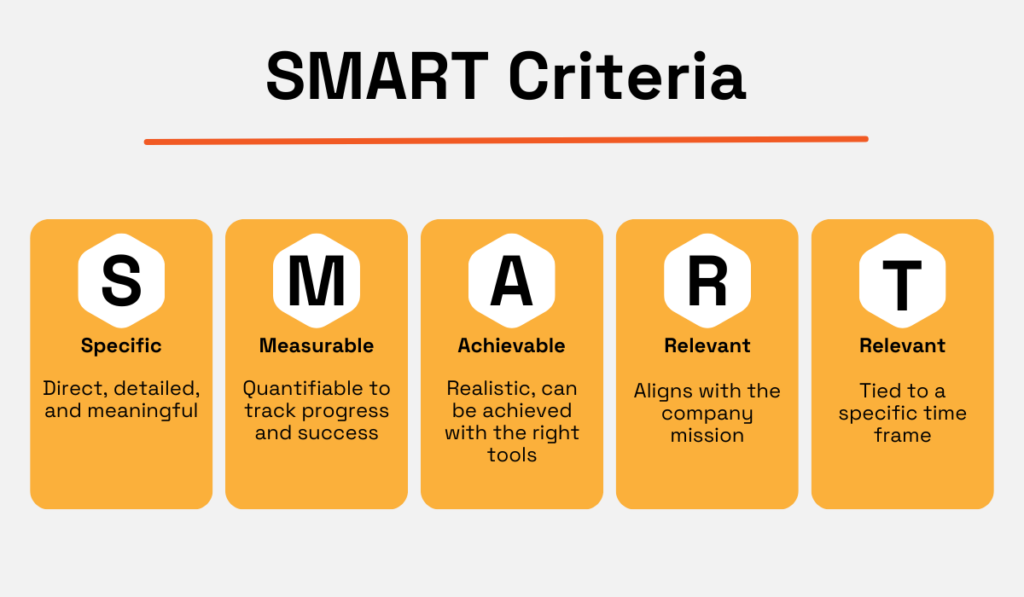
Source: Veridion
By doing so, you give your team a clear idea of what and why they need to track.
This won’t just make the monitoring process much easier, but also more motivating because they’ll have realistic, attainable targets to concentrate on.
Let’s demonstrate how the SMART framework works with some specific examples.
First, let’s analyze a KPI that’s not SMART: “supplier relationship.”
| Specific | It does not specify which aspect of the relationship should be monitored, so it’s not specific enough. |
| Measurable | It’s difficult to quantify supplier relationships, so it’s not measurable. |
| Achievable | Without concrete targets, it’s hard to pinpoint what achieving a good supplier relationship looks like, so it’s not achievable. |
| Relevant | Although it is relevant for the procurement process, it’s too broad to be actionable. |
| Time-bound | It’s tricky to set a specific timeframe for tracking progress, so it’s not time-bound. |
And now, let’s look at a SMART KPI—“cost savings”—and see why it works.
| Specific | It’s certainly specific enough, though it could be further specified (cost savings from negotiations, bulk purchasing, etc.). |
| Measurable | It can be quantified in monetary terms, like USD saved. |
| Achievable | Tracking this KPI is achievable because you can monitor it through your procurement software or physical records. |
| Relevant | It directly impacts the company’s financial performance and procurement efficiency. |
| Time-bound | It can be tracked within a specific timeframe (quarterly, monthly, etc.). |
Essentially, the main goal at this initial stage is to figure out what part of the process you want to improve, and then define clear-cut KPIs that will help you get there.
But remember: these metrics should never be too vague or broad.
That’s where the SMART criteria come in, guaranteeing your KPIs are always easily measurable and make sense in the context of your broader procurement and business goals.
And if you’re still unsure which metrics to keep your eye on, don’t worry.
We have an article dedicated solely to key strategic procurement KPIs that are definitely worth considering.
Use it as inspiration and a starting point on your journey to more efficient and actionable KPI tracking.
It’s one thing to know what to track, and a completely different thing to know how to track it.
That’s why it’s necessary to establish measurement criteria for your KPI tracking process.
By doing so, you essentially standardize the process, ensuring it’s done the same way, every single time, by every single employee, for all relevant metrics.
Why does this matter?
Just ask Ian Giles, Director at iangiles.io, a consulting company delivering payroll solutions and strategies.
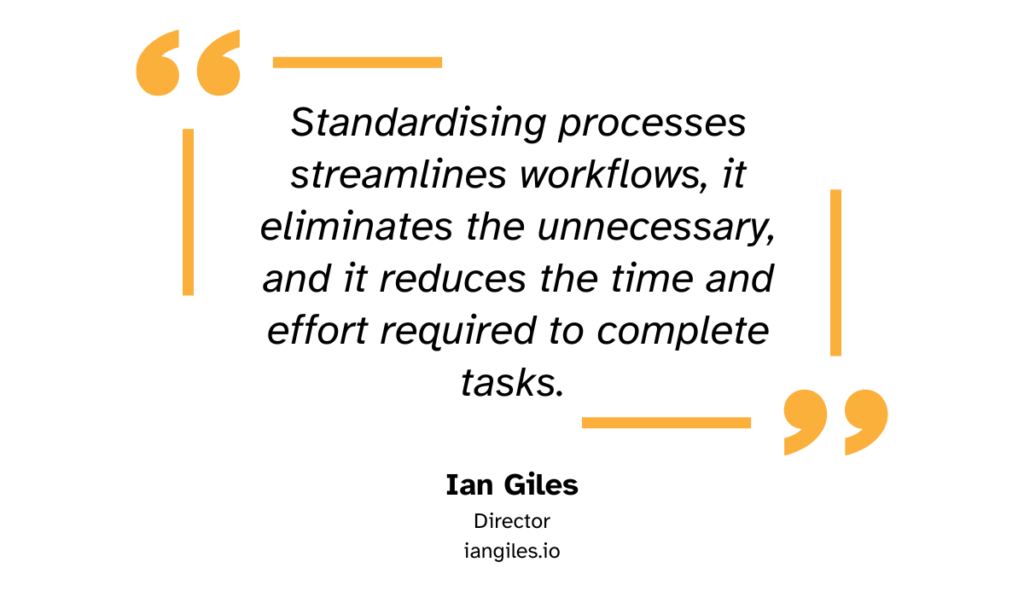
Illustration: Veridion / Quote: LinkedIn
Put simply, when you standardize the way you monitor your KPIs, you minimize errors during data collection and end up with more accurate, reliable insights.
After all, what’s the point of monitoring your KPIs if you can’t even trust the information you gather?
So, let’s break down what this measurement criteria exactly entail.
| Defining measurement units | Which standardized units, like percentages, days, months, or monetary value will be used to express KPIs |
| Outlining data collection methods | Which sources of data and data collection tools will be used, and how frequently |
| Determining calculation formulas | Which specific methods of deriving KPIs will be used |
| Establishing reporting frequency | How often should the data be reported (daily, weekly, quarterly, or annually) |
| Defining roles and responsibilities | Who is responsible for tracking, analyzing, and reporting each KPI |
Once you outline all of these elements, you’ll be able to breathe a bit easier, knowing everyone’s aware of their tasks and knows precisely how to do what they need to do.
No more guessing games or confusion.
Instead, you get consistent, accurate data that drive well-informed, data-driven decision-making.
For decision-making to be absolutely well-informed, however, you need to ensure you use only the freshest data possible.
Relying on old information paints a misleading picture of your procurement performance, potentially hiding certain problems or wrongly suggesting you’re doing better in some areas than you actually are.
Up-to-date insights, on the other hand, guarantee your KPI monitoring efforts truly reflect the current state of operations.
Mitchell Couper, Vice President of Delivery and Business Intelligence at SpendHQ, agrees that high-quality, timely data is paramount for procurement professionals these days.
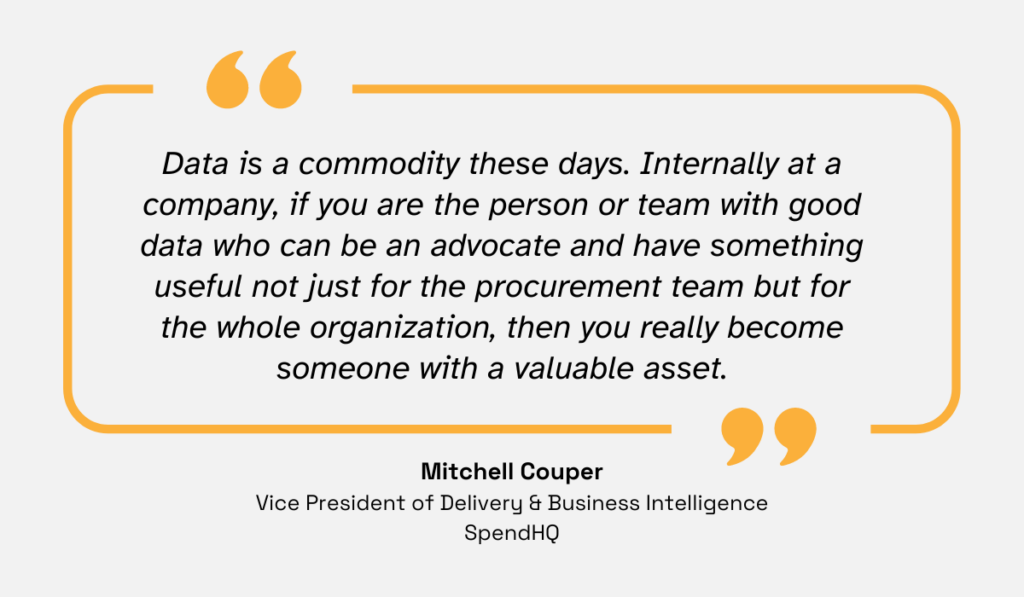
Illustration: Veridion / Quote: SpendHQ
But how do you get it?
One word: technology.
Unlike manual methods of data collection, which are quite time-consuming and error-prone, digital procurement solutions automatically track and manage updates across all your POs, invoices, supplier performance, and more.
Nothing beats these automation tools when it comes to speed and accuracy, no matter what aspect of your procurement process you want to focus on.
For instance, if you need to improve your supplier data, big data platforms like Veridion are your best bet.

Source: Veridion
Using its AI-powered Match & Enrich feature, Veridion updates your Supplier Master Record (SMR) and Master Data Management (MDM) in real-time, ensuring you always have the most accurate view of your suppliers and vendors.
And if you want to concentrate on supplier-related risk in particular, no problem.
Veridion lets you define your own risk factors, monitors changes in your suppliers’ business activity, and then immediately alerts you when potential issues are detected.

Source: Veridion
No change in your supplier landscape can escape Veridion’s vigilant eye.
The bottom line?
If you want to take your KPI tracking to the next level, fresh data is an absolute must-have.
Without it, you’re essentially working blindfolded, with no insight into the efficiency of your current strategies, procedures, and activities.
And how can you expect to improve something you don’t even see?
Data visualization tools are extremely useful for KPI tracking and analysis.
They translate the information you gather into a visual context, presenting it in a more compelling and easily understandable way.
As a result, it’s much easier to spot trends and patterns at a glance, especially in large data sets, and quickly derive actionable conclusions from them.
Dante Vitagliano, Co-Founder of Trailmapper, fundraising software, summarizes best what data visualization is all about.
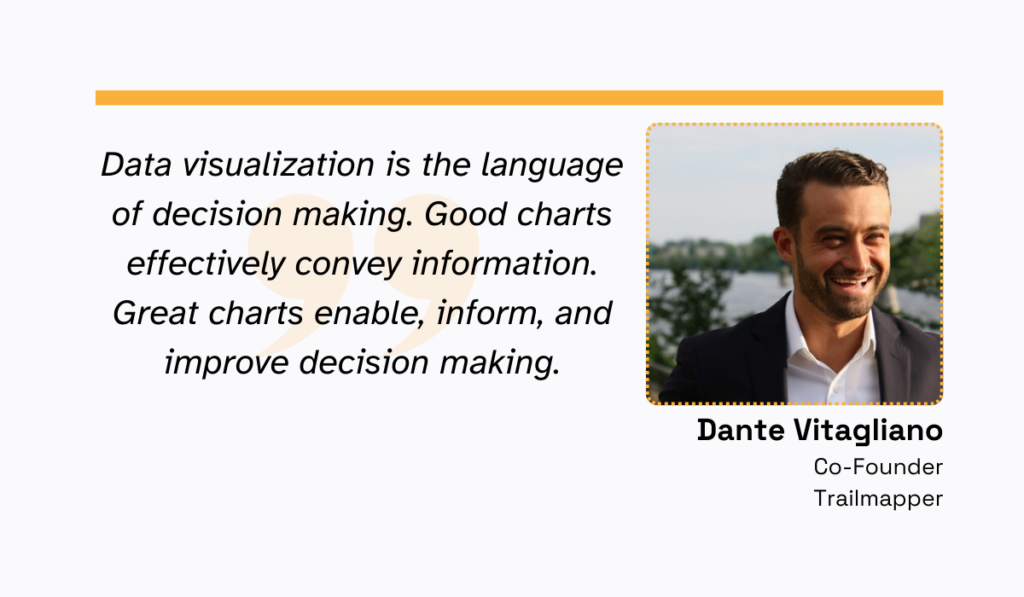
Illustration: Veridion / Quote: LinkedIn
Without it, you’d basically have no way of making sense of the information in front of you.
And what good does all that fresh and accurate data do if you can’t even understand it?
There’s a wide variety of visualization tools you can use, each catering to different needs.
Let’s explore some common types and what they are best suited for.
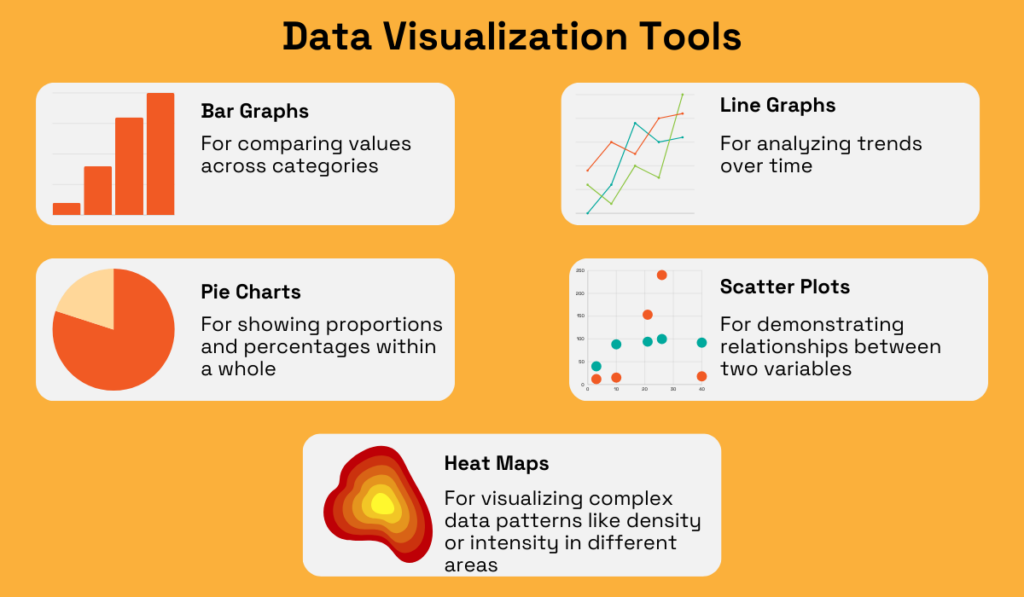
Source: Veridion
The key here is finding the right type of visualization for your specific data and the questions it should answer.
Nail that, and you’ll have a tool that conveys information in the simplest way, without omitting any crucial details—a perfect balance of depth and simplicity.
If you’re using procurement software, chances are, it already has built-in features to handle this for you.
Take, for example, Ivalua’s analytics and insights feature below.
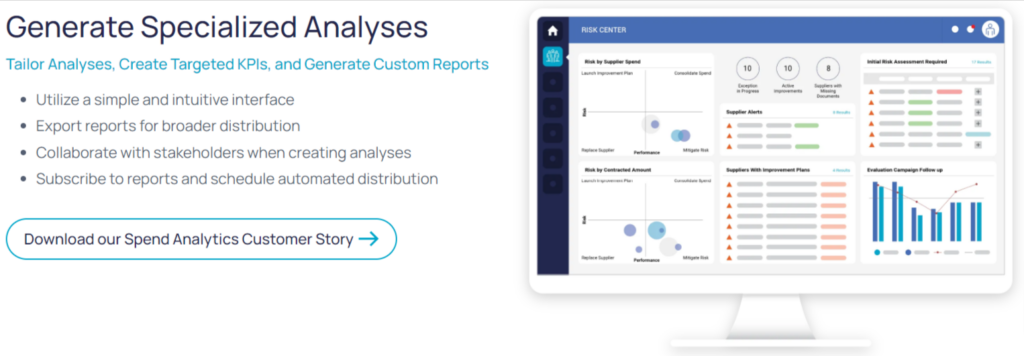
Source: Ivalua
Those features analyze huge data sets in mere moments and then create custom, interactive reports that present all the info in the most intuitive way possible.
Plus, they usually let you export these reports in various formats.
This allows you to share them with your team and other departments, thereby contributing to a more collaborative decision-making process.
Ingmar Mester, Director of Supplier Management and Sustainability at an international shipping and container transportation company Hapag-Lloyd, emphasizes just how important systems with such capabilities are.
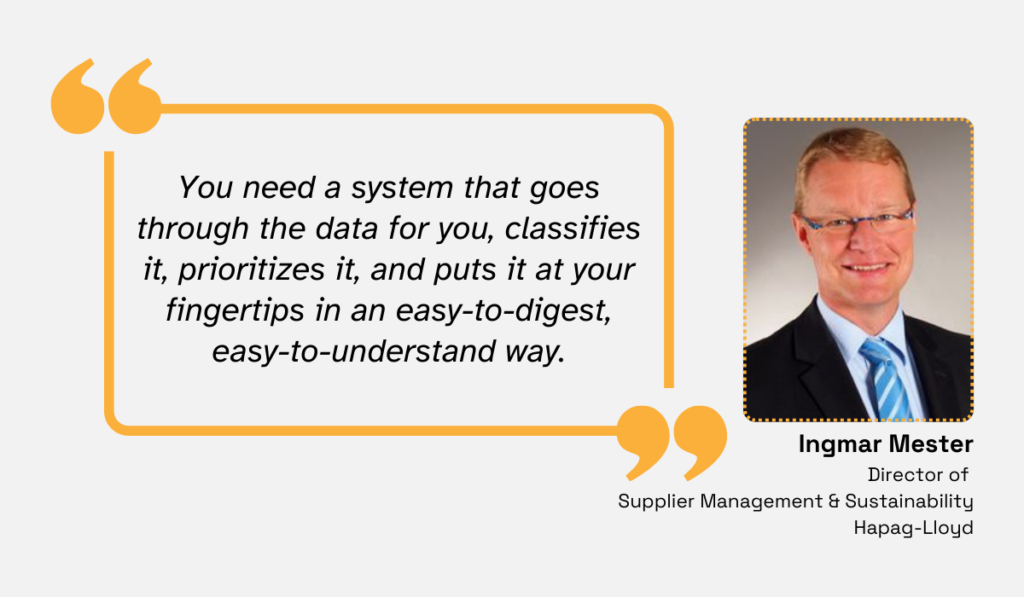
Illustration: Veridion / Quote: Craft
In fact, he points out that without them, KPI monitoring and data analysis can become too complex and tedious for your employees to handle.
So, why not make things easier for everyone?
Take full advantage of these data visualization tools and unlock actionable insights quickly and effortlessly.
For as long as the business exists, you need to constantly revisit and fine-tune the KPIs you’re tracking.
This ensures you always target relevant metrics that reflect current trends, technological advancements, and evolving industry standards.
This, in turn, keeps your procurement practices:
That’s right—it’s not only completely normal, but absolutely necessary to put certain KPIs on the backburner and make room for others every once in a while.
Take cost savings, for instance.
Measuring this metric was once the sole focus of every procurement professional out there.
But now?
Not as much, says Richard McIntosh, Managing Director at Procura Solutions, a company helping drive procurement cost savings.
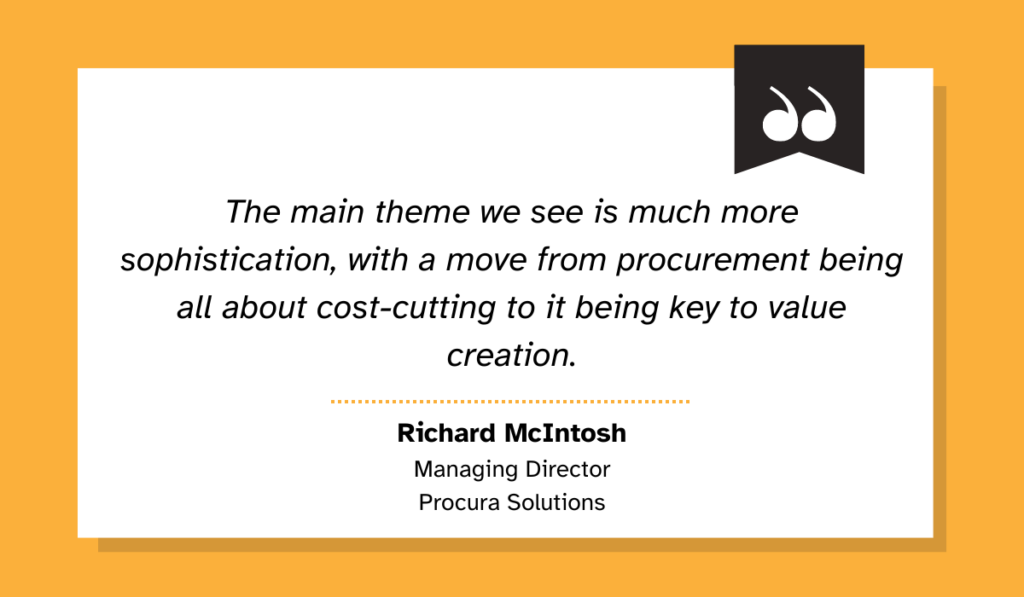
Illustration: Veridion / Quote: Private Equity International
Of course, this isn’t to say that you should completely ignore this metric. It still holds significant value.
However, it’s interesting to see how CPOs nowadays tend to focus on the much bigger picture.
For example, sustainability KPIs have been at the center of attention for a while now, and there are two reasons for that.
Firstly, because of the regulatory guidelines, explains Etosha Thurman, Chief Marketing and Solutions Officer at SAP.
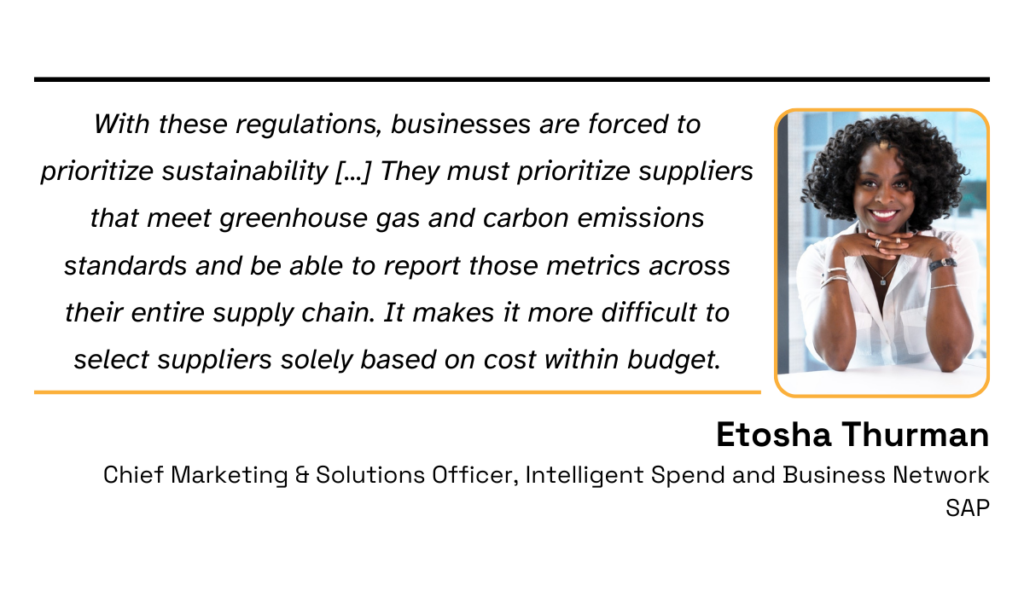
Illustration: Veridion / Quote: Supply Chain Management Review
Due to new sustainability regulations from governments, companies are, in a way, forced to shift attention from increasing procurement cost savings to ensuring more sustainable practices.
It just makes more sense to stay compliant and avoid legal issues than simply chasing quick financial wins.
Secondly, aligning procurement with market trends actually boosts the company’s success.
Did you know that the 2024 BlueYonder study found that 65% of consumers are willing to pay more for sustainable products?
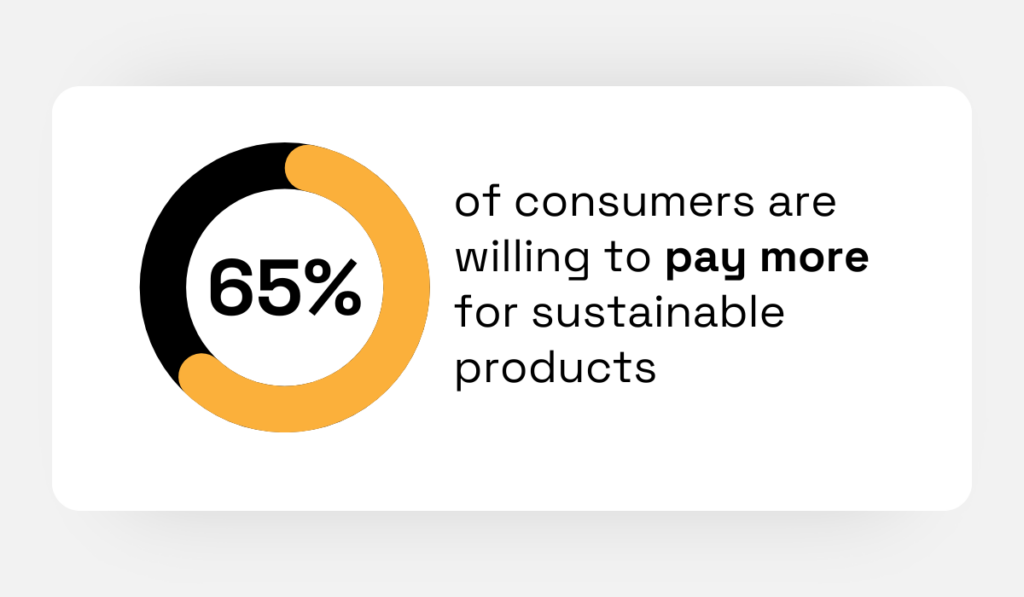
Illustration: Veridion / Data: BlueYonder
That means that, by prioritizing eco-friendly and responsible procurement, you can potentially unlock more profits and boost the business’s reputation.
Much better than plain old cost savings, isn’t it?
That’s precisely why your KPIs must evolve.
It’s the only way to ensure your operations stay in tune with the ever-changing customer preferences, government mandates, and the company’s broader goals.
Congratulations!
Now, you’re one step closer to completely mastering the art of KPI tracking.
However, don’t try to implement all of these tips at once; such a drastic change might overwhelm you and your team.
Instead, start with the first tip and gradually work your way through the rest, one step at a time.
Before you know it, the way you track KPIs will be completely transformed, and you’ll reap all the amazing benefits, such as improved efficiency and better risk management.
So, track, analyze, and always strive for improvement.
Your KPIs will be your guide and get you wherever you want to be.